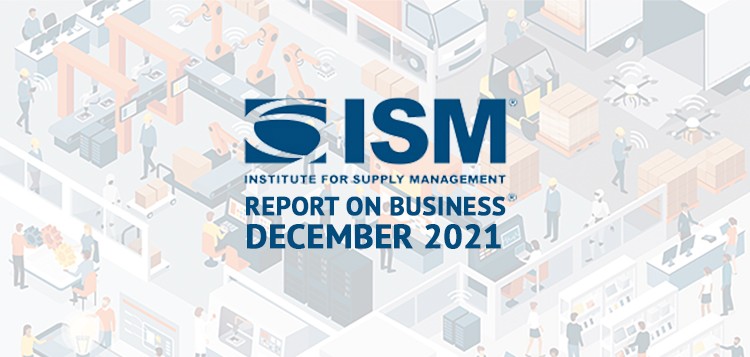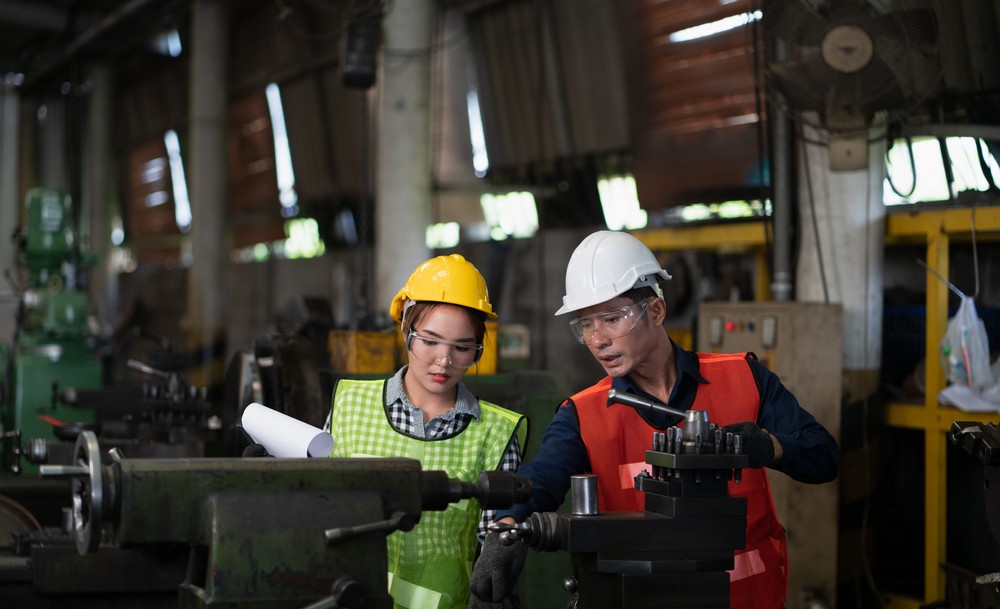PMI Backs Off Yet Remains Stable in December 2021 Manufacturing ISM Report on Business

As 2021 recedes in the rearview mirror, most manufacturers are happy to see it go. While it was a strong year for the industrial economy, manufacturers dealt with their fair share of problems — including inflation, supply chain struggles, and the unpredictability of COVID-19 variants. Nevertheless, manufacturing persevered.
According to the December 2021 Manufacturing ISM Report on Business, manufacturers ended 2021 the same way they began: going strong. Both the January 2021 and December 2021 PMI registered 58.7, settling close to the 12-month average of 60.7. Industry was both strong and consistent, and December’s numbers lay the groundwork for the year ahead.
A closer look at the numbers
While the December PMI figure was only down 2.4 points from November, strong action within the report’s individual metrics hint at the volatility of 2021. Customers’ Inventories swung up 6.6 points, while Supplier Deliveries dropped off 7.3 points. Imports grew roughly a point, while Exports tapered off about half a point. New Orders and Production both fell, 1.1 and 2.3 points respectively, while Employment and Order Backlogs both rose roughly a point.
The biggest story of December’s report was the free-fall associated with prices. After riding historic highs for most of 2021, prices finally dropped back to earth, shedding 14.2 points at the close of the year. It’s a strong sign industry is moving in the right direction for 2022.

Early signs of supply chain improvement
The biggest headline in 2021 was, of course, supply chain disruptions. Supply chain problems caused delays, material scarcities, increased shipping costs, and a host of other lingering problems. Now, supply chains are showing signs of improvement, according to a new tool from the Fed: the Global Supply Chain Pressure Index.
The Global Supply Chain Pressure Index measures the current impact of supply chain disruptions. This barometer showed major spikes at the beginning of the pandemic before dropping in the summer of 2020 as world production started back up. It spiked again in winter 2020 due to the resurgence of COVID-19 cases, and has since continued to remain high.
But there’s good news on the horizon. The index’s latest readings suggest supply chain woes have reached their peak and may begin to level out in early 2022.
Labor concerns are keeping manufacturers up at night
With prices finally deflating and supply chains firming up, manufacturers have begun to turn their attention to the other significant hurdle of 2021: employment. Labor shortages continue to affect the industry as manufacturers’ struggle to find skilled workers.
Open manufacturing positions are at an all-time high, but there’s a persistent lack of available workers with the experience to tackle factory operations. This, coupled with increasing production demand, spells big problems for companies looking to regain their feet in 2022.

A strong year on the horizon
Despite last year’s myriad obstacles, the manufacturing sector came out of 2021 as strong as it entered. Now, with prices retracting and signs of supply chain improvement, there’s optimism for 2022. If manufacturers can overcome labor issues and restore their value stream stability, 2022 could be manufacturing’s year to flourish after the decade’s bumpy beginning.